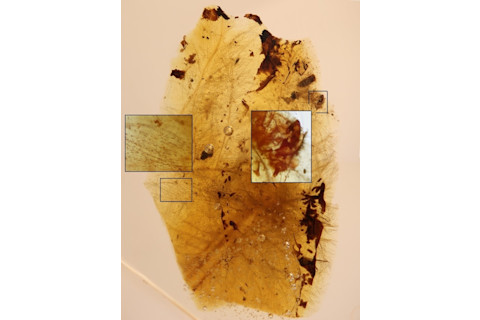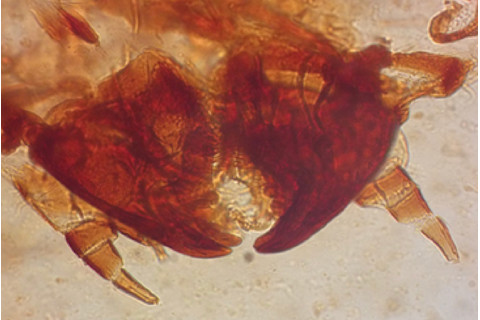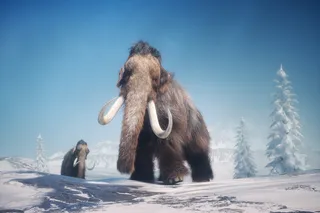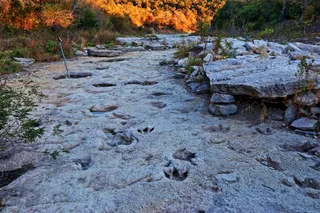What's more appetizing than a mouthful of fluffy feathers? Not much, apparently, for a rare type of arthropod from the planet's remote past.
That's because around 105 million years ago, ancient beetles fed on the feathers of the dinosaurs. In fact, fossilized remains trapped in amber recently revealed this relationship between the arthropods and the theropods, according to a paper published in Proceedings of the National Academy of Sciences.

(Credit: CN IGME-CSIC) The larval molts of the beetles were found in the immediate proximity of theropod dinosaur feathers.
CN IGME-CSIC
Arthropods and Theropods: A Symbiotic Relationship
Today, many arthropods maintain special, symbiotic relationships with a wide variety of vertebrates, and notable among these relations are those between beetles and birds, whether they're mutualistic (with both organisms benefiting), commensalistic (with one organism benefiting and the other being unaffected), or parasitic (with one organism benefiting and the other being adversely affected).
But despite the fact that arthropods and vertebrates have coexisted on the planet for over 500 million years — and despite the fact that their coexistence is typically thought to have had dramatic effects on their evolution of both — fossil evidence of symbioses between the two has been extraordinarily difficult to find.
Now, fossil-filled fragments of ancient amber reveal a symbiotic relationship between the relatives of today’s beetles and birds, according to an international team of researchers.
Read More: Did All Dinosaurs Have Feathers?
Dermestid Beetles Fed Off the Feathered
Taken from caves and outcroppings throughout Spain, the fragments of amber feature the fossil molts of beetles and a flurry of fossilized feathers.
According to the team, the molts came from the larval ancestors of modern-day dermestids. Playing a pivotal part in balancing ecosystems, these beetles feed on natural fibers and other organic materials that are difficult for other organisms to digest. Today, they’re typically found scavenging in the nests of birds and mammals, munching on the feathers, fur and flakes of skin that their vertebrates hosts leave behind.

(Credit: CN IGME-CSIC) This fossilized molt of a feather-feeding beetle larva was found in a piece of amber from the El Soplao outcropping in Spain. The length of the molt is less than one tenth of an inch.
CN IGME-CSIC
“The beetle larvae lived — feeding, defecating, molting — in accumulated feathers on or close to a resin-producing tree, probably in a nest setting,” says Enrique Peñalver, a member of the team and a researcher from the Geological and Mining Institute of the Spanish National Research Council, according to a press release. “A flow of resin serendipitously captured that association and preserved it for millions of years.”
Dino Feather Fluff
The feathers, on the flip side, originated from an unspecified species of theropod dinosaur.
“In our samples, some of the feather portions and other remains — including minute fossil feces, or coprolites — are in intimate contact with the molts attributed to dermestid beetles and show occasional damage and/or signs of decay,” Peñalver says, according to the same release. “This is hard evidence that the fossil beetles almost certainly fed on the feathers and that these were detached from its host.”
The fact that the fluff was detached from its host is important in determining the specific type of symbiosis between the feather-feeding beetles and the theropods, according to the team.
“It is unclear whether the feathered theropod host also benefited from the beetle larvae feeding on its detached feathers,” says Ricardo Pérez-de la Fuente, another member of the team and a researcher from the Oxford University Museum of Natural History, according to the release. “However, the theropod was most likely unharmed by the activity of the larvae since our data show these did not feed on living plumage.”
Ultimately, the team stresses that their research reveals the evolution of the relationships between arthropods and vertebrates today, with arthropod symbionts switching from feathered theropods to birds at the time of their eventual emergence, around 75 million years ago.
Read More: Dinosaur Feathers Found in Ancient Amber















